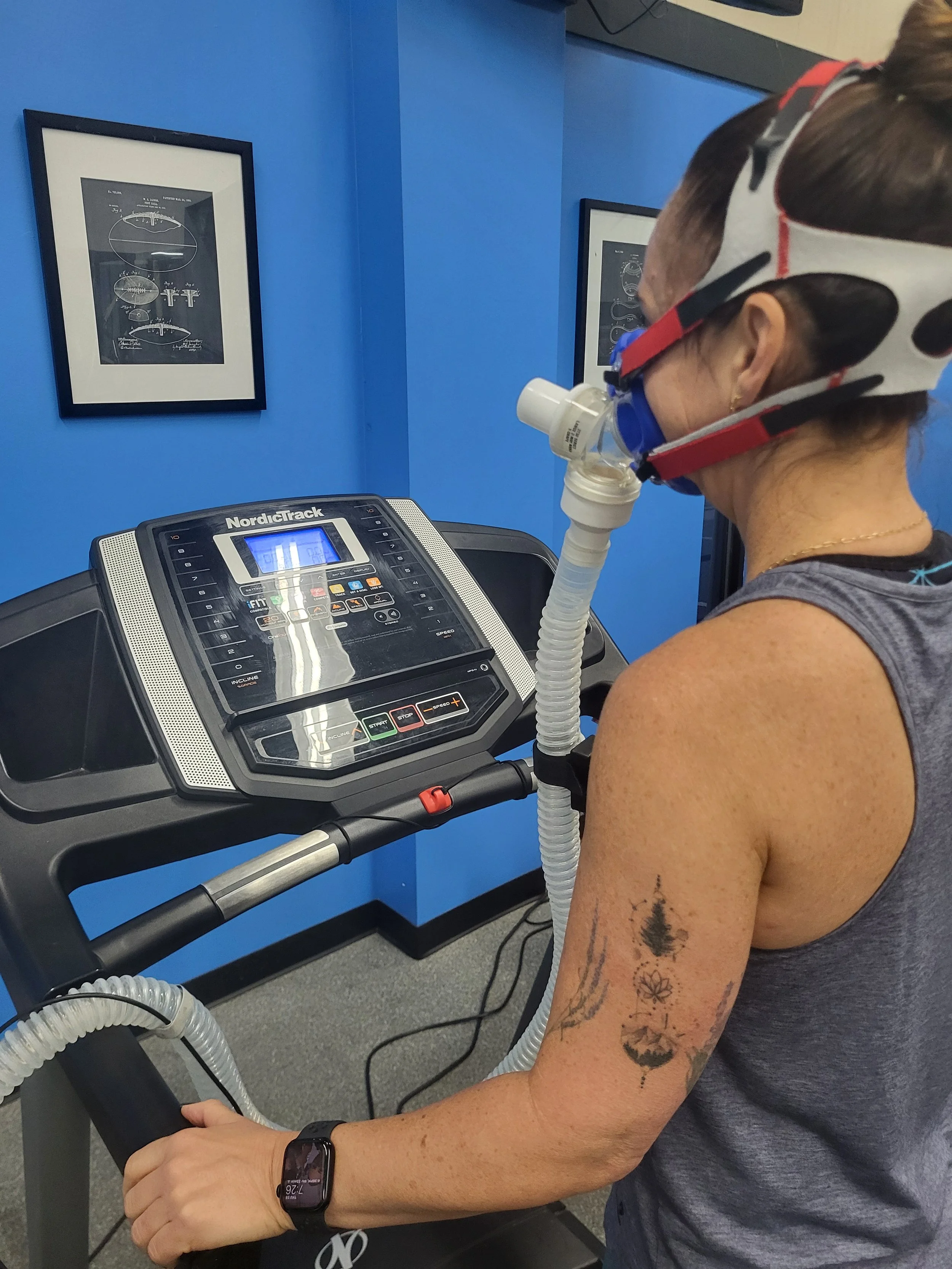VO₂max: The Fitness Number that Predicts Your Potential
/VO₂max: The Fitness Number that Predicts Your Potential
If you’ve ever wondered how fit you really are — beyond what the scale or a smartwatch says — there’s one number that tells the full story: your VO₂max.
What VO₂max Means
VO₂max basically stands for “maximal oxygen uptake.” “V” is the volume of “O2” (oxygen) the you can maxiimally process, making it your “max”. It’s measured in the number of milliliters of oxygen you can process, per kilogram that you weigh, per minute. It measures how efficiently your body uses oxygen during exercise — essentially, how well your heart, lungs, and muscles work together to power your movement. The higher your VO₂max, the more oxygen you can deliver to your muscles, and the better your endurance, recovery, and performance. Research shows it’s one of the most accurate measures of overall aerobic capacity and endurance potential (Bassett & Howley, 2000).
Think of it like your engine size. Two cars can look identical, but the one with a stronger engine performs better with less effort. Your VO₂max is that engine capacity for your body.
How VO₂max Is Tested
During a VO₂max test, you’ll exercise on a treadmill or bike while wearing a mask that measures the oxygen you inhale and the carbon dioxide you exhale. The test gradually increases in intensity until you reach your limit. From those gas measurements, we calculate your oxygen consumption — giving a precise picture of your aerobic fitness level.
Unlike the estimates you see on fitness watches, true metabolic testing provides data directly from your physiology, not an algorithm. You’ll learn your training zones, calorie burn rates, and thresholds — the same information elite athletes rely on to fine-tune performance.
Why It’s Not Just for Athletes
While VO₂max is often associated with endurance pros, it’s actually one of the strongest predictors of health and longevity for everyone. Large population studies show that cardiorespiratory fitness — measured as VO₂max — predicts mortality more strongly than smoking, blood pressure, or diabetes (Blair et al., 1989). A higher VO₂max is also linked to dramatically lower risks of cardiovascular disease and type 2 diabetes (Kodama et al., 2009).
If your goals include weight loss, better energy, or simply feeling younger for longer, knowing your VO₂max can help. By training in the right intensity zones based on your test results, you burn fat more efficiently and avoid over- or under-training — saving time and frustration. Structured programs that use VO₂max or ventilatory thresholds consistently produce greater improvements in aerobic capacity and metabolic health than generic exercise recommendations (Midgley, McNaughton & Jones, 2007).
Bringing It All Together
Understanding your VO₂max gives you a clear roadmap for better performance, fitness, and longevity. Whether you’re a runner chasing a PR or someone wanting to feel stronger and healthier, VO₂max testing connects the science to your everyday routine.
If you’re searching for VO₂max testing near me in the Philadelphia area, we offer professional metabolic testing using medical-grade Korr equipment — helping you take the guesswork out of your training and health journey.
Book your test today and discover what your fitness potential really looks like!
References
Bassett DR, Howley ET. Limiting factors for maximum oxygen uptake and determinants of endurance performance. Med Sci Sports Exerc. 2000;32(1):70-84.
Blair SN et al. Physical fitness and all-cause mortality: a prospective study of healthy men and women. JAMA. 1989;262(17):2395-2401.
Kodama S et al. Cardiorespiratory fitness as a quantitative predictor of all-cause mortality and cardiovascular events: a meta-analysis. JAMA. 2009;301(19):2024-2035.
Midgley AW, McNaughton LR, Jones AM. Training to enhance the physiological determinants of long-distance running performance. Sports Med. 2007;37(10):857-880.


